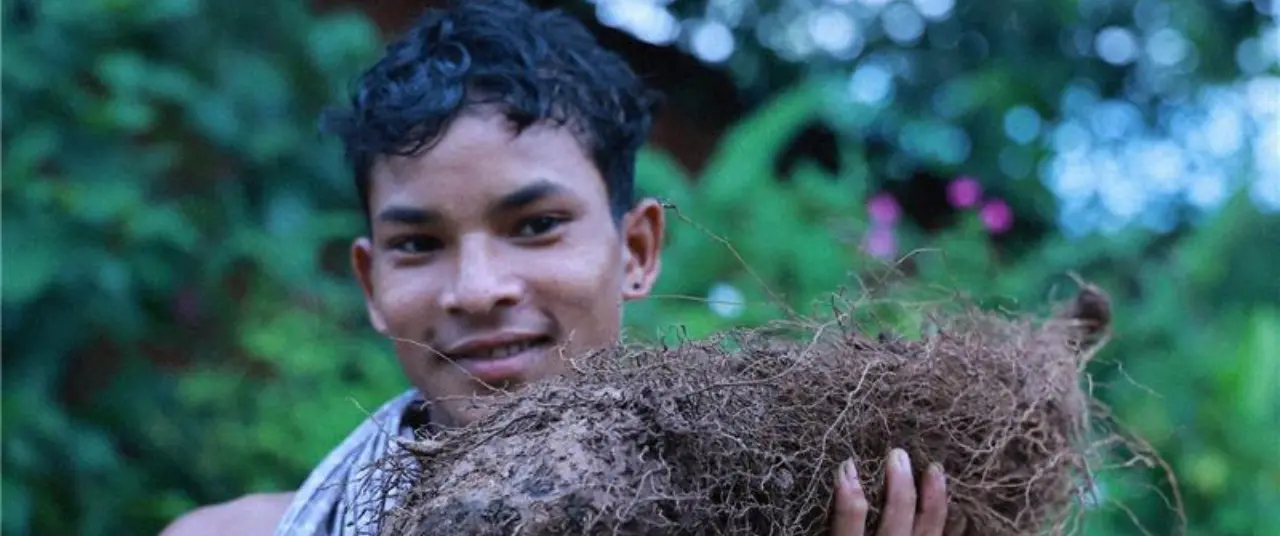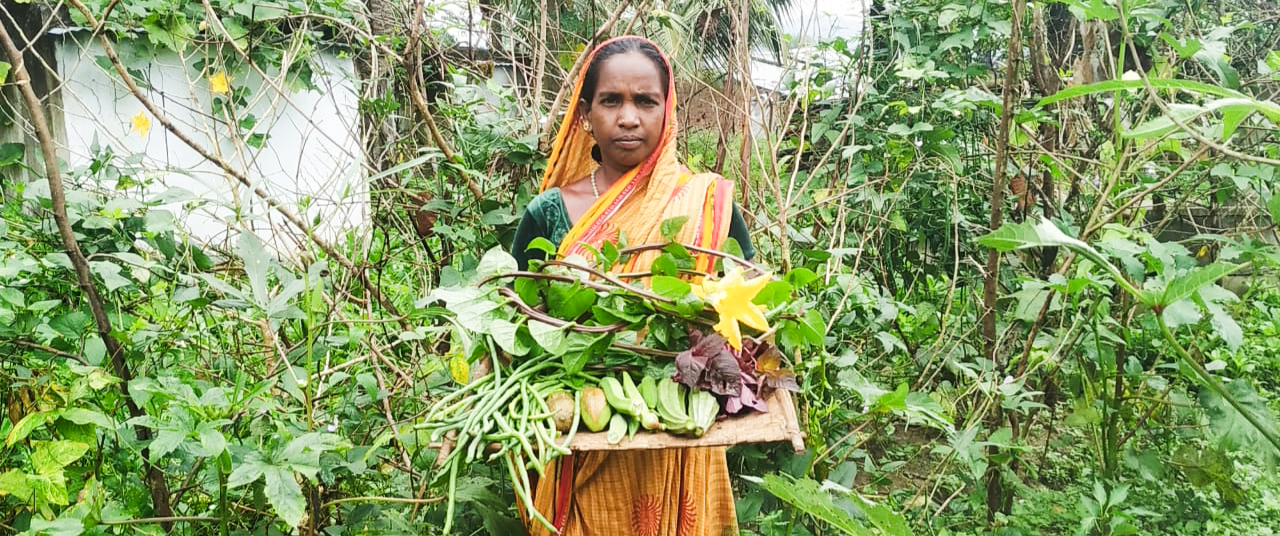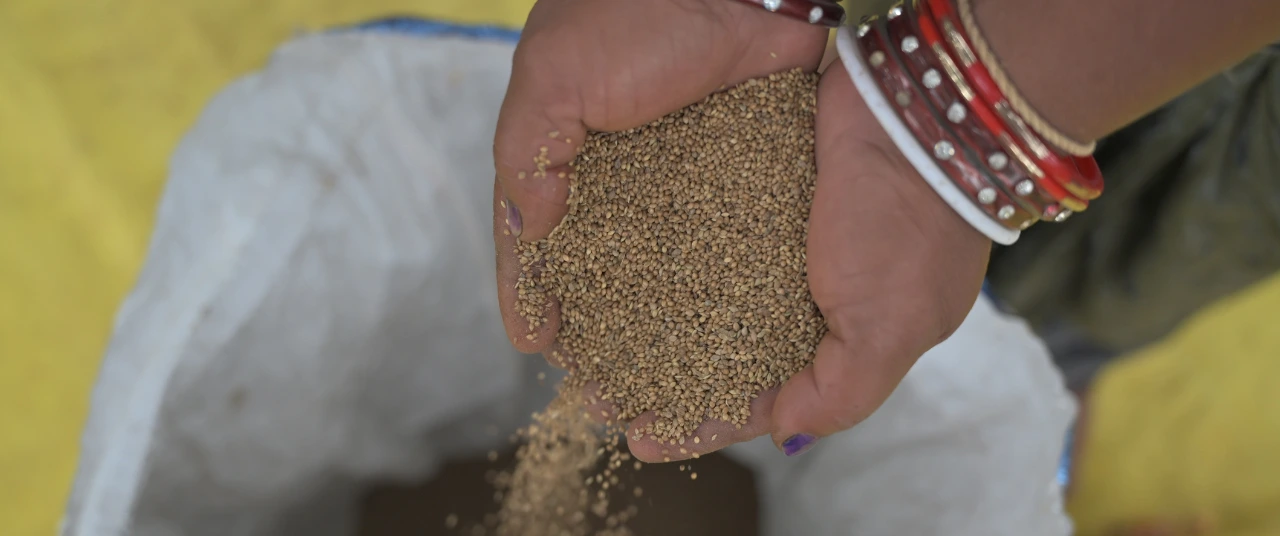Amid climate change and shifting diets, smoke and fire ensure nourishment






It’s a drizzly early morning in Odisha’s Sanbahali village, located in the Nuapada district. A group of seven women from the Chuktia Bhunjia community—one of India’s Particularly Vulnerable Tribal Groups (PVTG)—are ready to head into the nearby forest. (According to the 2011 Census, their population in Odisha was approximately 12,350). Armed with bamboo baskets and umbrellas, they set off with quiet determination.
“When the rains come, we forage for wild edible mushrooms like Mala chhati, Bial chhati, Bina chhati, Banji chhati, Bali chhati, and Sargi chhati,” says 63-year-old Padma Jhankar. Locally, mushrooms are known as chhati. Not all wild mushrooms are safe to eat—some can be poisonous. “You need a sharp eye to spot the edible ones,” Jhankar explains, “We rely on traditional knowledge passed down orally through generations to identify forest foods.”
Of the mushrooms that the community harvests, Mala chhati is small, reddish, and typically found in sandy soil. Bial chhati is white and varies in size, also growing in sandy terrain. Bina chhati sprouts from termite nests—it has a long stalk with a small cylindrical head, which is white with a grayish center. Banji chhati thrives around bamboo trees; it is a creamy white with a brown spot on top. Its stalks are thin, and the body is less fleshy compared to others.
Other wild mushrooms commonly harvested during the monsoon include sargi, bali, bhuin, and kusuma. “These wild mushrooms are delicious and always in high demand,” says 37-year-old Hasila Bai from the Salepada village in Komna block. The demand comes both from locals, as well as from non-tribal outsiders, and she sells the surplus harvest in local markets to supplement her family’s income.

Bamboo shoots—locally known as kordi—are another seasonal delicacy cherished by the Chuktia Bhunjia community. Young shoots are harvested at the onset of the monsoon, between July and September. After harvesting, the tough green exterior of the shoot is removed, and the tender interior is grated into short, thin strips for cooking.
Across the past five decades, Odisha has been witness to natural calamities in 41 years—19 of which were marked by drought, according to the Odisha State Disaster Management Authority (OSDMA). Nuapada, which is among the districts most prone to this calamity, has faced severe droughts in multiple years—10 times in only 20 years, as noted in the OSDMA’s District Disaster Management Plan, 2024.
The Chuktia Bhunjia community, whose livelihood depends on rainfed agriculture—mainly paddy and millets—thus stands at the frontline of climate change. Erratic rainfall, prolonged dry spells and rising temperatures have increasingly disrupted their crop yields.
While traditional crops like millets are resilient to high temperatures and require less water, their productivity has declined, making it difficult for families to meet their year-round food needs. As a result, the community has become increasingly dependent on wild food sources to cope with food scarcity, especially during the lean season or in the event of crop failure. Today, the older generation in particular spends more time harvesting and preserving wild edibles, as farm yields have become increasingly unpredictable owing to the changing climate.
Yet, in the face of these challenges, they have adapted by turning to their traditional food preservation methods, such as smoking, sun-drying, and storing edibles in leaf bags. These practices help them build resilience, ensuring food availability during periods of scarcity.
Also read: Bastar's secret ingredient? The power of preservation
The ancient magic of fire and smoke
Traditionally, Chuktia Bhunjias have preserved seasonal wild edibles—such as mushrooms, bamboo shoots, and fish—using an age-old smoke-drying technique. Bamboo sticks are used to create a simple rack, on which the mushrooms and fish are carefully arranged, just above the ground. Beneath this setup, a small fire is lit to produce slow, steady smoke rather than open flames.
To ensure effective drying, a thick cloth is draped over the structure, trapping the rich, aromatic smoke and allowing it to circulate around the food. This slow-smoking process continues for several days, depending on the type of food being preserved. The result is perfectly dried mushrooms and fish that can be stored for long periods—providing both flavour and nutrition during lean seasons.
Dried mushrooms and fish are not just staples for the Chuktia Bhunjia community—they are also prized for their long shelf lives, making them essential ingredients in many traditional recipes. Sukha chhati bhaja, a stir-fried dish made from dried mushrooms, is one such delicacy that is commonly enjoyed during the winter and summer months.
“Most wild edibles are highly perishable, so we preserve them for consumption during the off-season,” says 37-year-old Jam Bai from Junapani village. For example, bamboo shoots begin to turn brown and develop a foul smell within two to three days of harvesting. To extend their shelf life, the shoots are chopped into tiny pieces and sun-dried for about two weeks to make hendua—a traditional dried form of bamboo shoots. When properly sun-dried and stored in an airtight glass container, hendua can last for two to three years, she adds.
{{marquee}}
“We preserve hendua for the winter, turning it into a chutney with tomatoes, onions, green chilies, oil and salt. It is relished with rice during winter,” says Jam Bai. The chutney tastes slightly sour and has an earthy flavour. Hendua is also sold in the local weekly markets at a price of Rs. 100-120 per kilo, she adds.
Wild edible fruits, seeds, and flowers, too—such as kendu, jujube, chironji seeds, jackfruit seeds, tamarind, and mahua flowers—are traditionally sun-dried. Once thoroughly dried, these food items are wrapped in palasa leaves (Butea monosperma) and hung above the chulha or fireplace in the kitchen. The smoke from the fireplace acts as a natural insect repellent and further enhances their preservation. “We collect jackfruit seeds, wash them thoroughly, and dry them under the sun. In summer, we boil them, peel the skin, mash the seeds, add a pinch of salt, and eat them for breakfast,” says 43-year-old Suadi Majhi from Sunabeda village.
Mangoes collected from nearby forests are also preserved in various ways, one of which is Amba Sadha—a sun-dried mango leather made from fresh mango pulp. The process begins by extracting the pulp and spreading a thin layer over a bamboo tray. After sun-drying it for two days, another layer of pulp is added on top. This layering continues until 5 to 7 layers are formed. It typically takes around 20 days for the Amba Sadha to fully dry. The final product is sweet with a hint of sourness, and serves as a cherished seasonal treat that can be enjoyed long after mango season has passed.
The age-old food preservation wisdom of the Chuktia Bhunjias is a powerful narrative of sustenance, social harmony, and sustainable living, says Pritisai Majhi, Programme Manager at Sabuja, an NGO working on the livelihood development of tribal communities in Komna.
However, he warns that these foodways are at risk of disappearing and losing their place in this tribal society.
Also read: Dried to last
The precarity of a food system and oral tradition
According to community elders, the last two decades have seen significant changes in their food habits. “The younger generation is more inclined to eat rice, potatoes, and fried food. They are not as physically strong as our grandparents once were,” says Naratasingh Chatria, 64, Sarpanch of Junapani Panchayat in Komna block.
“Tribal foods, which are climate-resilient, culturally rooted, and highly nutritious, are still neglected and often perceived as ‘poor man’s food’ in urban areas,” said Jitendra Kumar Kar, Senior Programme Officer at Watershed Support Services and Activities Network (WASSAN), Bhubaneswar. He emphasised the need to change this narrative, which undervalues the culinary heritage of tribal communities. Kar coordinates the Coalition for Food Systems Transformation in India (CoFTI), a multi-stakeholder panel advocating for indigenous and tribal food cultures, forest knowledge, and agroecology.
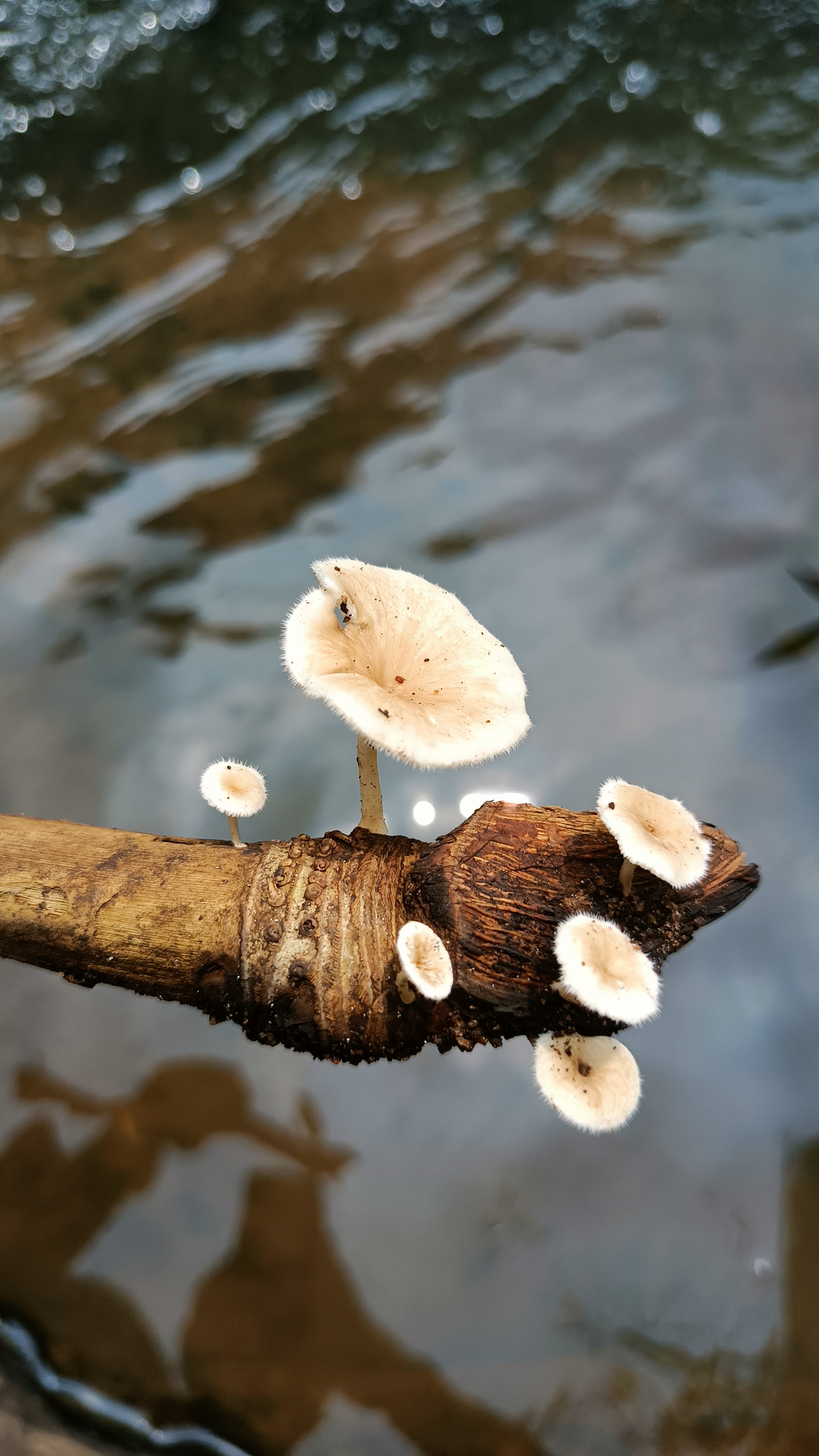
Local civil society groups in Nuapada claim that the shift from a rich, diversified diet to a cereal-centric food plate has led to poor health outcomes among tribal communities. According to the Poshan District Nutrition Profile (2022), 64% of non-pregnant women in Nuapada were anemic, and 57% suffered from anemia during pregnancy (as of 2020). Additionally, 31% of women were underweight. Among children under five, 43% were stunted, 73% were anemic, and 38% were underweight. Across India, about 4.7 million tribal children under five suffer from chronic undernourishment, which affects survival, growth, learning, school performance, and future productivity, according to United Nations Children's Fund.
“Providing rice at subsidised rates through the Public Distribution System has jeopardised the community’s traditional food system, which ensured nutritional security for generations,” says Abhishek Hota, Programme Officer at WASSAN, Nuapada.
He stresses that most traditional food knowledge in tribal communities is passed down orally, and the lack of proper documentation could result in the loss of cultural heritage for future generations.
In response, WASSAN, in collaboration with tribal communities and supported by the Department of Agriculture and Farmers’ Empowerment (DA&FE), Government of Odisha has documented heirloom crop diversity, forgotten food cultures, and traditional recipes across 20 tribal-inhabited villages in Nuapada district.
“This initiative will play a crucial role in formulating better policies for neglected and forgotten food crops of tribal communities,” says Arabinda Kumar Padhee, Principal Secretary, DA&FE. Conservation and promotion of these ancient foodways will be a key intervention in the coming years. It will help diversify food systems, improve nutrition, conserve biodiversity, and safeguard Odisha’s cultural heritage, he adds.
“The traditional process of drying food using smoke and sunlight reduces moisture content, inhibits microbial growth, and prevents spoilage,” says Dr. Srikanta Dhar, a specialist at the All India Institute of Medical Sciences (AIIMS), Bhubaneswar. He notes that uncultivated and wild edibles foraged by tribal communities significantly contribute to their intake of calcium, iron, essential minerals, and vitamins. However, he cautions that proper identification, purification, and storage are essential before consumption. In the past, there have been reported cases of tribal deaths caused by consuming improperly prepared mango kernels, as well as poisonous mushrooms or bamboo shoots.
The traditional food practices of the Chuktia Bhunjia are more than just survival strategies—they are a testament to resilience, cultural continuity, and ecological wisdom.
Also read: In rural Odisha, the Juang community's seeds are gifts from ancestors
Sukha chhati bhaja recipe
In a pot, boil water. Add the dried mushrooms and cook for about 30 minutes on medium flame. Add salt and turmeric powder to enhance the flavour. After boiling, drain the excess water.
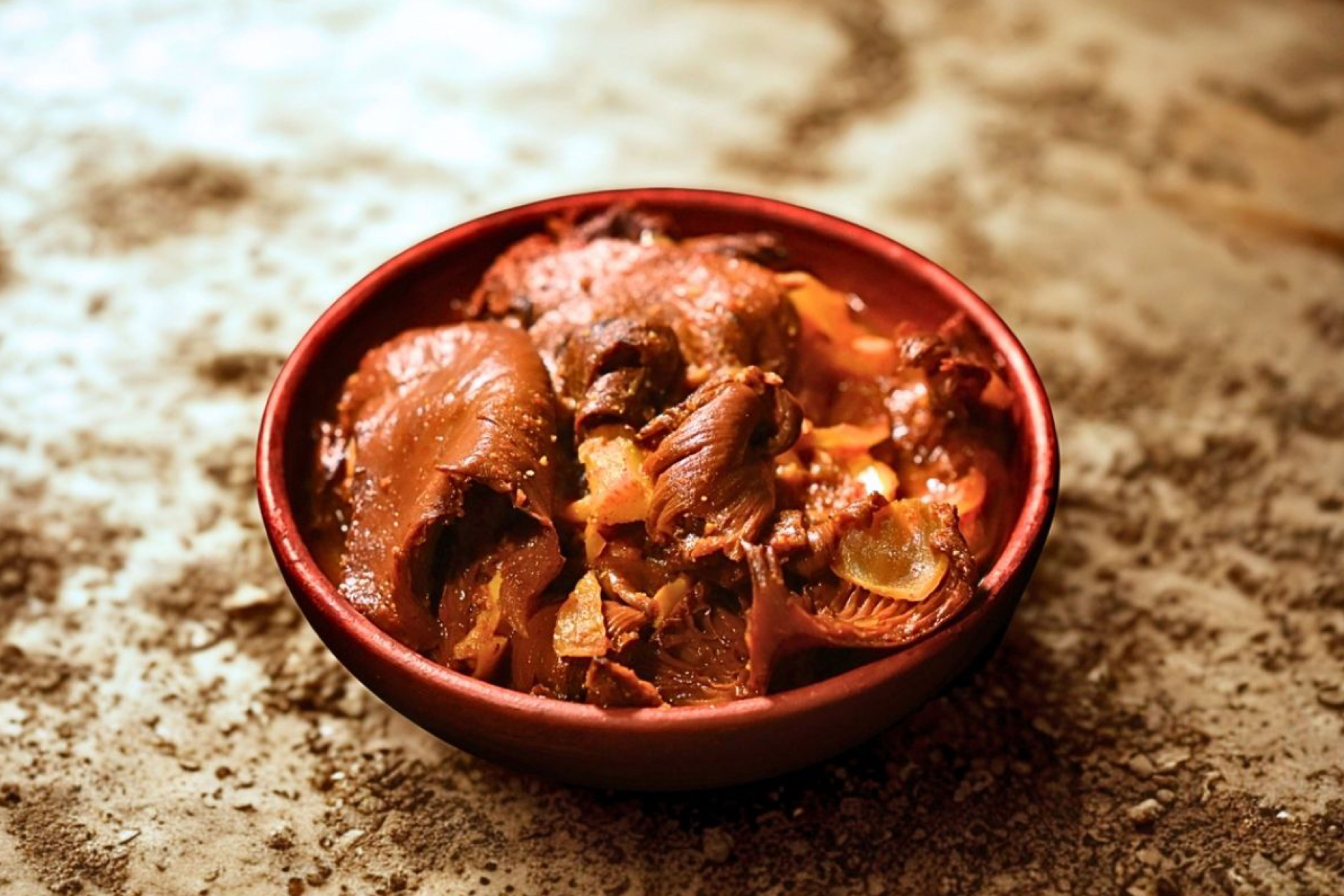
Heat oil in a pan over medium flame. Add chopped onions, garlic, and grated ginger. Sauté until the onions are translucent and fragrant. Add chili powder, cumin powder,turmeric, and salt to taste. Mix well to blend the flavours.
Add the boiled mushrooms to the pan. Stir everything together and cook for another 20–25 minutes, allowing the flavours to meld. Once cooked, serve hot with rice or chapatis.
Edited by Anushka Mukherjee and Neerja Deodhar
{{quiz}}
Explore other topics
References

How do the Chuktiya Bhunjias preserve their mushrooms, bamboo and fish?

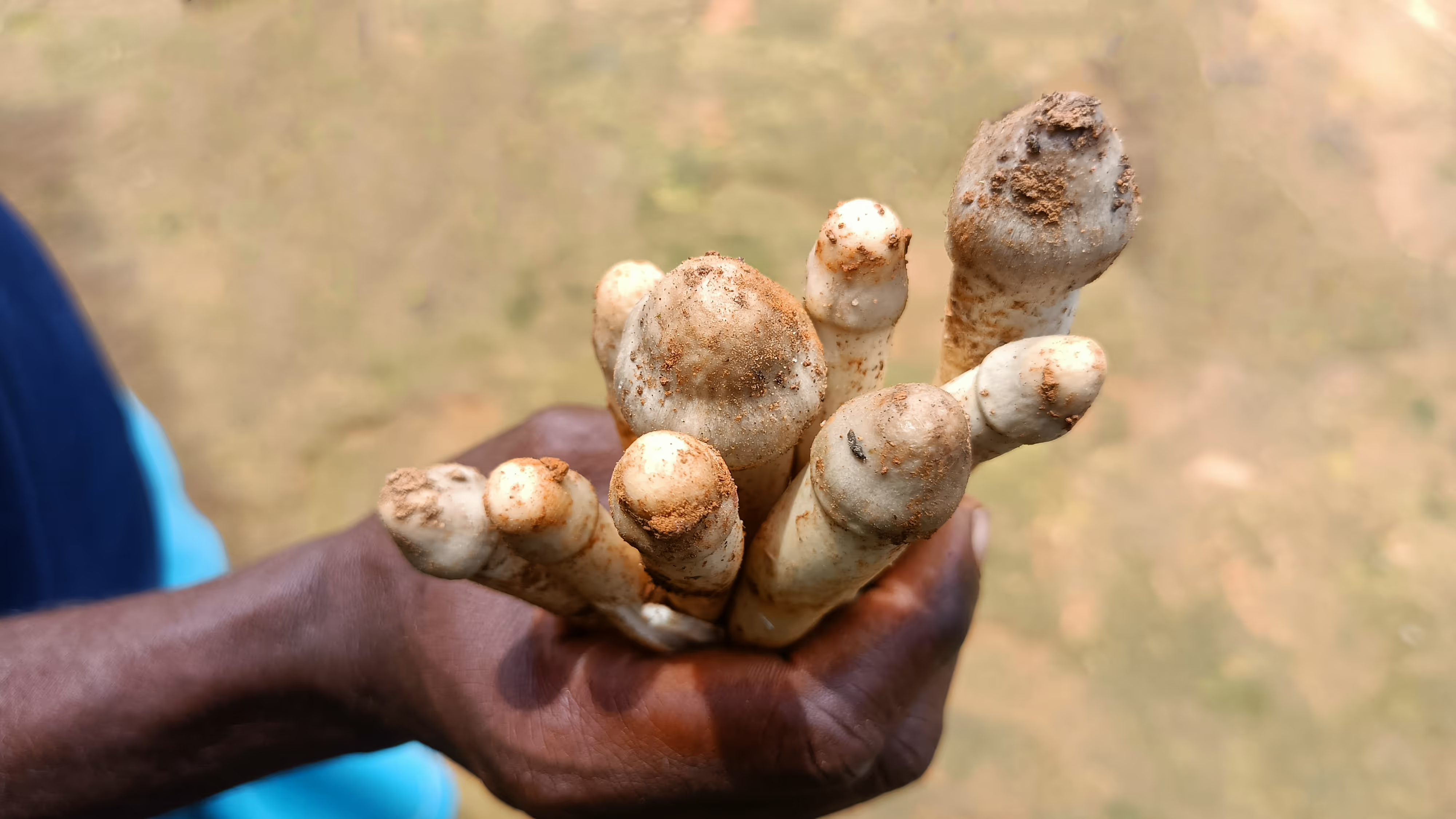
.avif)

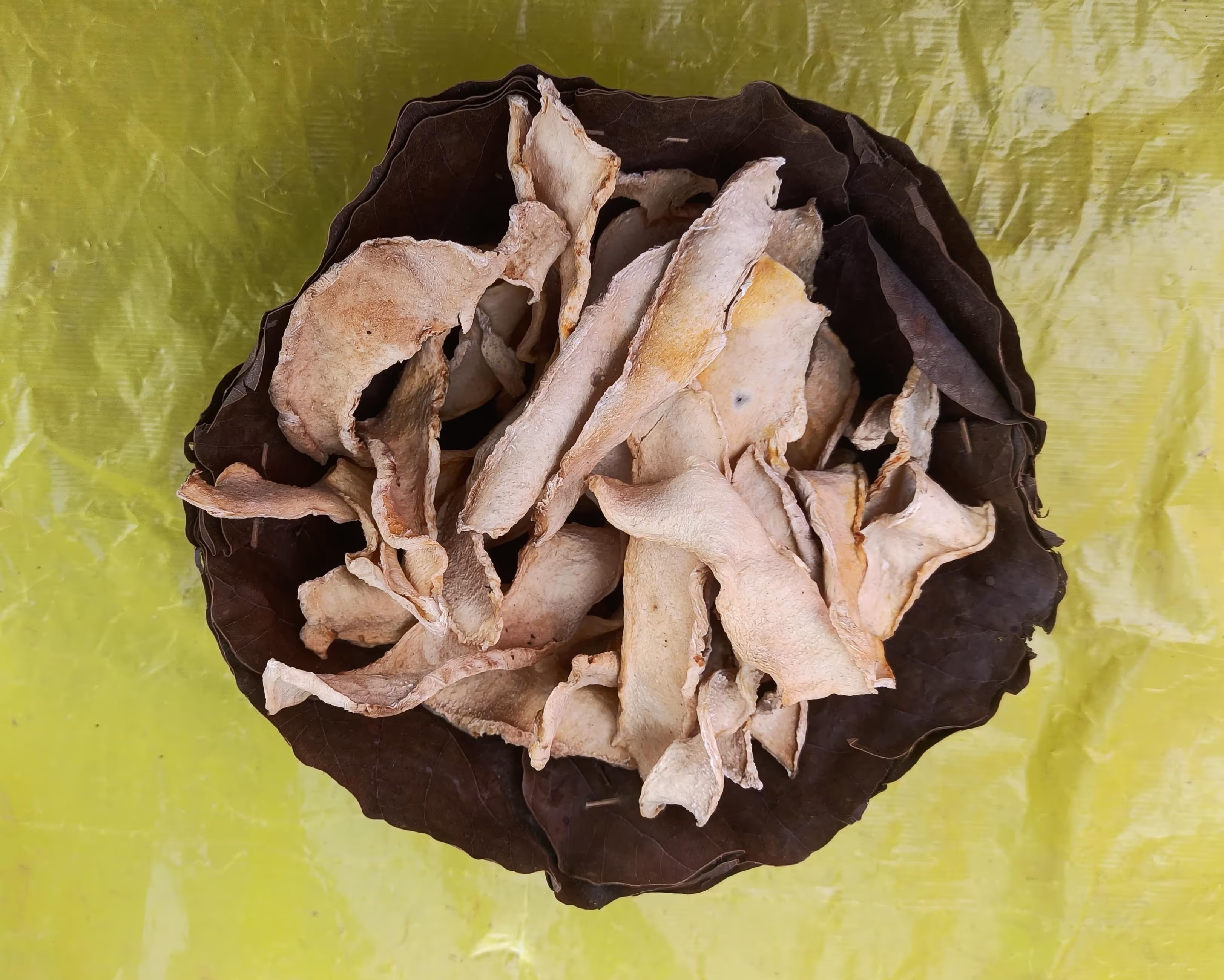
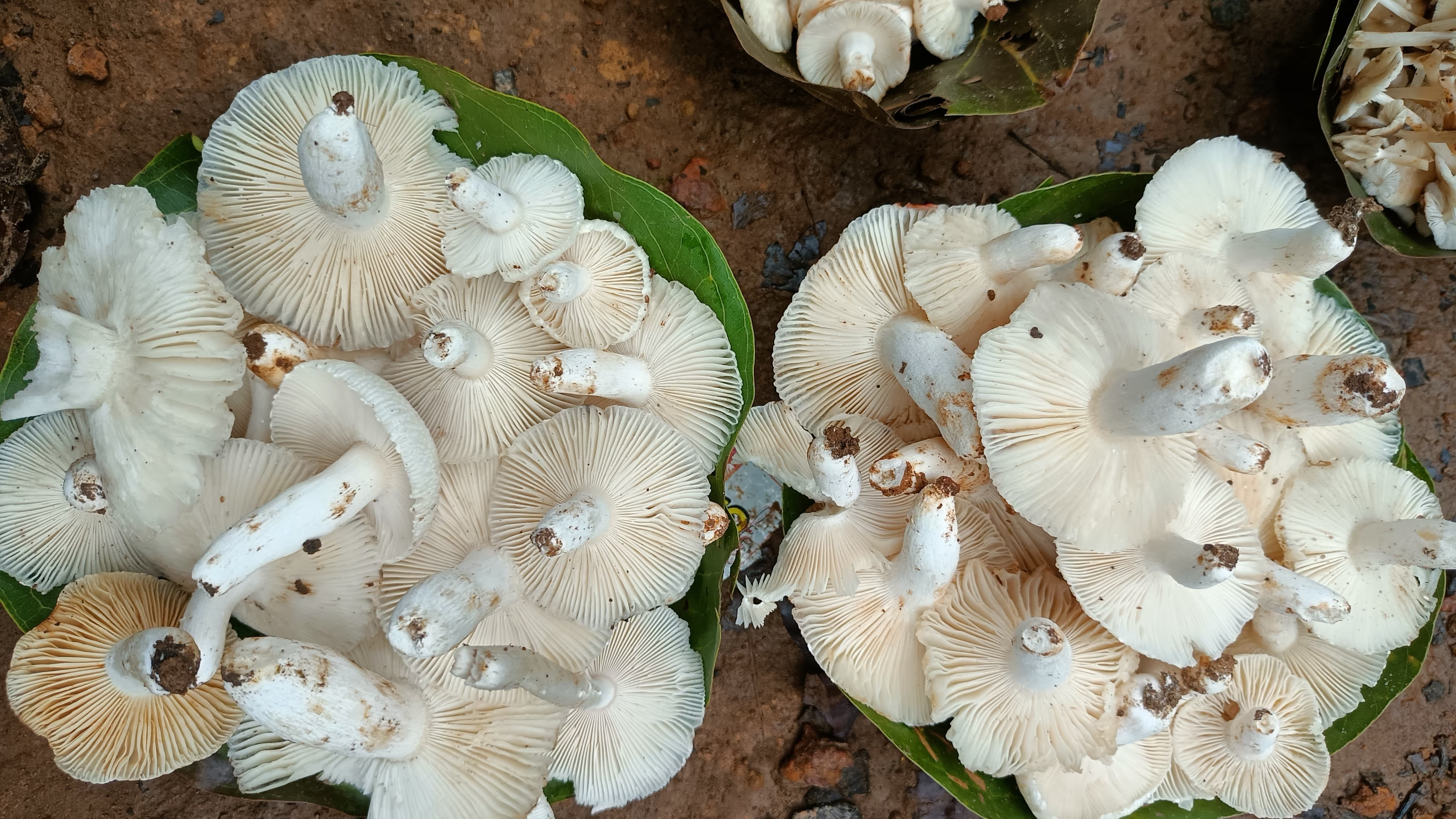


.avif)





.avif)





.avif)



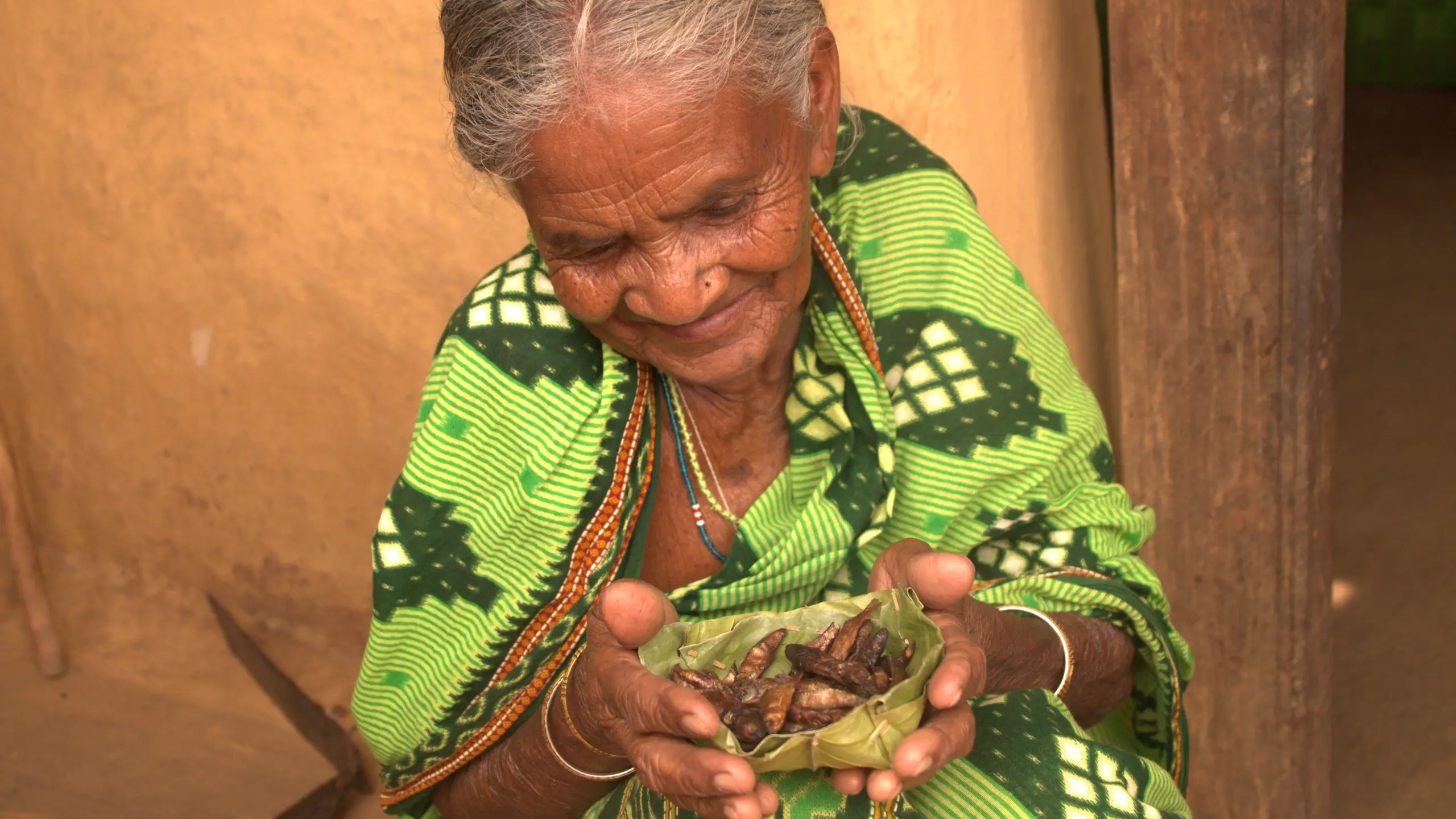
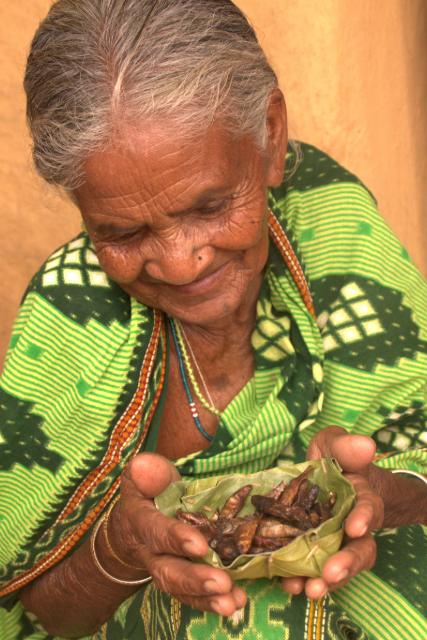



.png)
